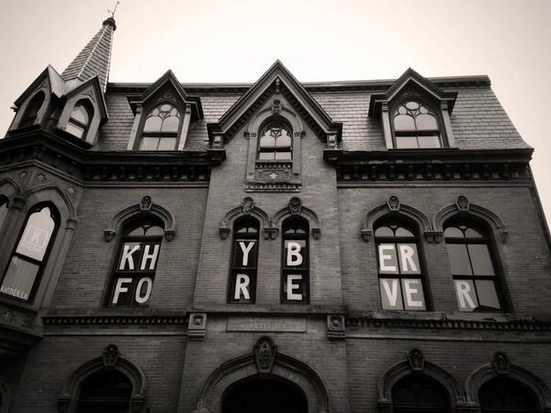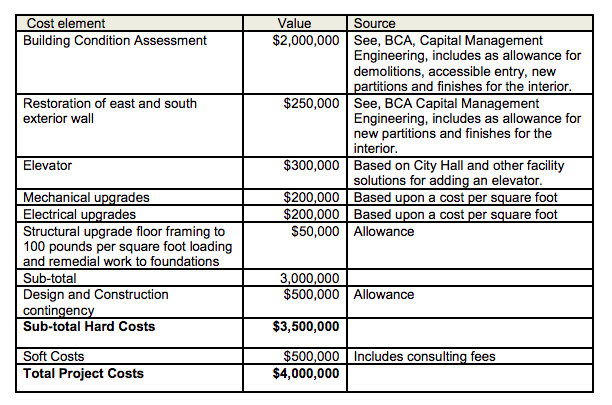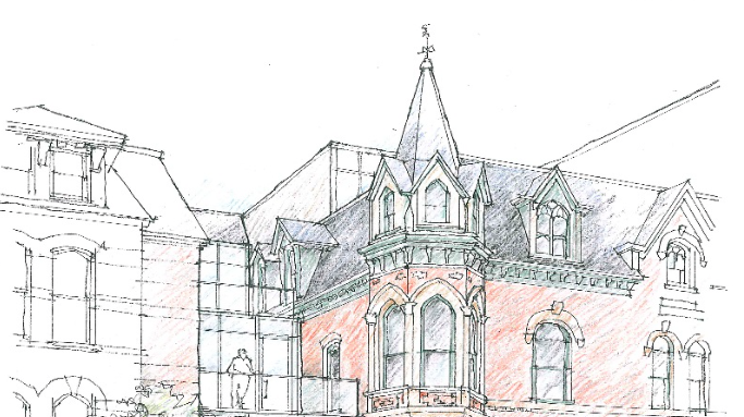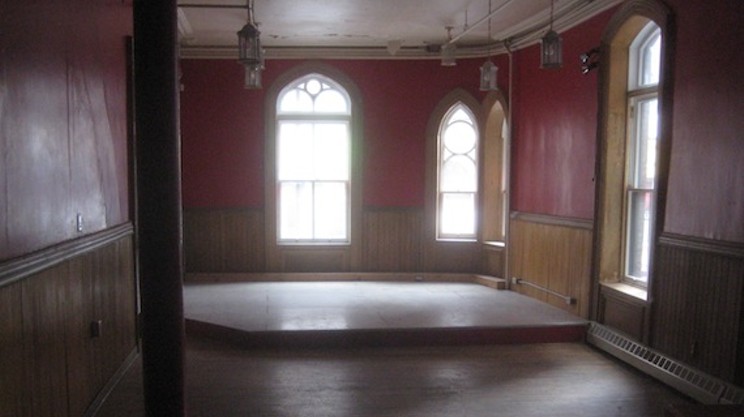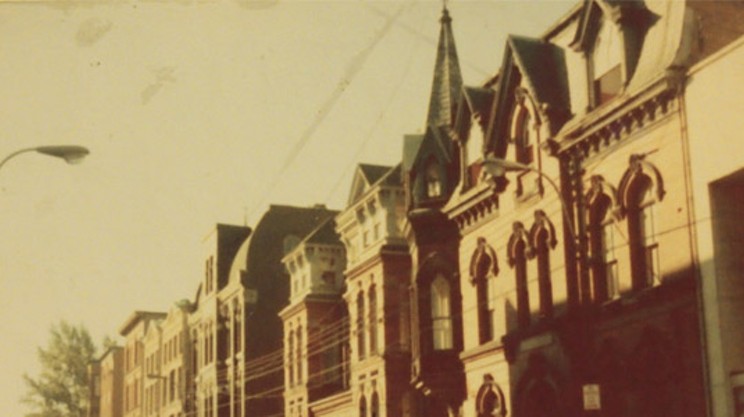Once again, the future of the Khyber building will be discussed at City Hall. Two information items are being presented to council today on the conditions of 1588 Barrington Street and the status of HRM’s arts incubator pilot project. Both items are raising familiar frustrations for friends of the Khyber.
A press release yesterday stated no consultation was offered to the Friends of the Khyber and Khyber Arts Society for a building assessment that reiterated claims 1588 Barrington Street needs $4 million in renovations.
Over the past six months, those two groups and Neptune Theatre have been working together with engineering and architectural experts to try and draft up plans for a sustainable, multi-organizational future for the historic 126-year-old building.
“Our goal right now is to make sure that the building stays off the surplus list long enough for council to hear a detailed and diligent proposal from us,” says Friends of the Khyber organizer Emily Davidson. “It’s a beautiful historical gem. There’s a reason it’s on Halifax’s heritage list. It’s a building worth investing in.”
Councillor Waye Mason asked for these two reports during the crowded September meeting last year where city council delayed declaring the Khyber building as surplus.
Mason told the papers he’ll make a motion today to have the two latest information items pushed to next week’s agenda. He says he’ll then propose a “joint management agreement” between the city, the Friends of the Khyber, the Khyber Arts Society and Neptune Theatre to take a closer look at the building assessment.
The municipally-registered heritage building provided a home to the Heritage Trust and Khyber Arts Society at below-market leases until February of last year. Asbestos concerns had Halifax terminate both tenants’ monthly leases and ordered them to vacate the building by end of March. Council later approved a three-year grant of $45,000 to supplement the KAS’ efforts in relocating.
To everyone’s surprise, the building showed up on a September staff report listing various HRM properties to be considered surplus and sold off. Facing huge public outcry—and some choice words from Joel Plaskett—council happily removed the location pending further information.
But for the groups fighting for the Khyber, that information has come up lacking. The less-than-detailed costs the city has tabled breaks down the estimated $4 million total into some fairly large chunks.
Half of the total project cost is tied into the building condition assessment, but there aren’t more detailed cost estimates for that $2-million price tag. There’s also half a million dollars in design contingencies, and another $500,000 for consulting fees. The Khyber folks, and the city, will probably want a more detailed breakdown before moving forward one way or another.
Of course, no one would make the claim 1588 Barrington Street is in good condition. The roof, walls, floors and structural supports need repairs. There’s significant work to be done making the building accessible, and apparently bringing the electrical system up to code.
A previous “non-destructive visual inspection” by Capital Management Engineering found the Khyber in a “very poor” state. Their condition index considers a building between zero and five percent as in excellent states. Between five and 10 is considered good, and over 10 percent is listed by CME as poor conditions. The Khyber was rated at 50 percent.
“This facility is currently the second worst condition building in the HRM property portfolio.”
Then there’s the report on HRM’s “arts incubator” project. Initiated in 2010, the pilot was based off a previous year’s feasibility study on the future ownership and operation of the Khyber. The three-year operating strategy was proposed to allow for continual future operations and the management of the site by the KAS. The second phase of that project was intended to transfer facility management to the KAS and complete major capital improvements. The deliverables on that phase, today’s information item notes, can’t really be met.
“The presumed scale and cost of the required renovations, and the corresponding financial assumptions of the 2010 report, have proven inaccurate upon more detailed investigation.”
Progress on implementing the operating strategy has been “frustrated.”
The staff report notes an “arts incubator” usually requires “some manner of subsidy, whether from government, private sector or a combination of sources.” But it attempts to weasel out of the previous agreement by noting most incubator models in other cities aren’t location-based, like Halifax’s agreement is to the Khyber’s Barrington home.
“From a programming perspective, the building had been successfully operating as an arts incubator,” the report notes, but “it is important to note that the arts and cultural outcomes have being successfully delivered by KAS and continues to provide a mechanism for arts incubation at their Cornwallis Street location…The success of KAS in both arts incubation and cultural programming at the alternate location confirms that arts incubation is not location specific.”
Ask anybody who’s anybody and they’ll tell you the Khyber Arts Society isn’t “succeeding” at their current north end location. They’re surviving—making the best of a smaller space and higher rent to still offer some artistic resources for the city they love. Halifax’s staff would know that, if they had spoken with the society in compiling this item.

